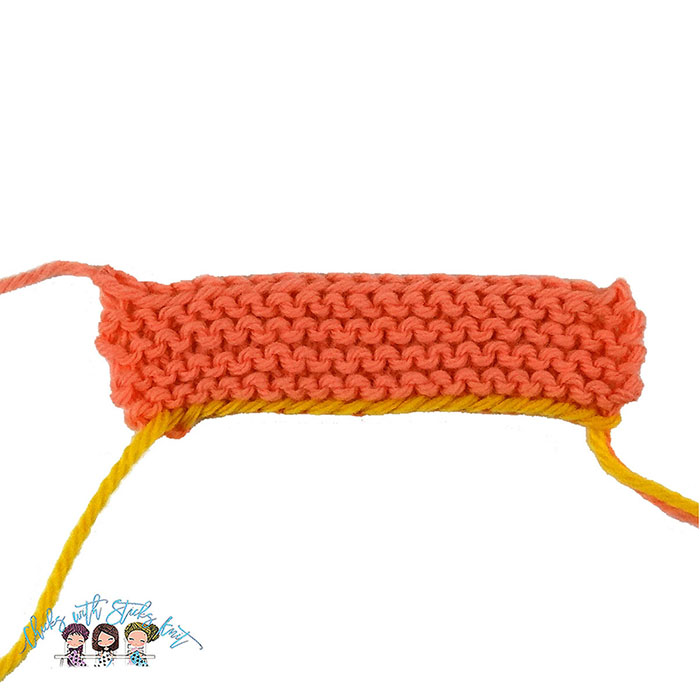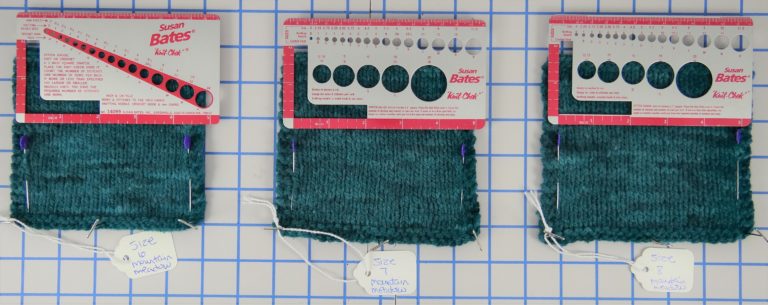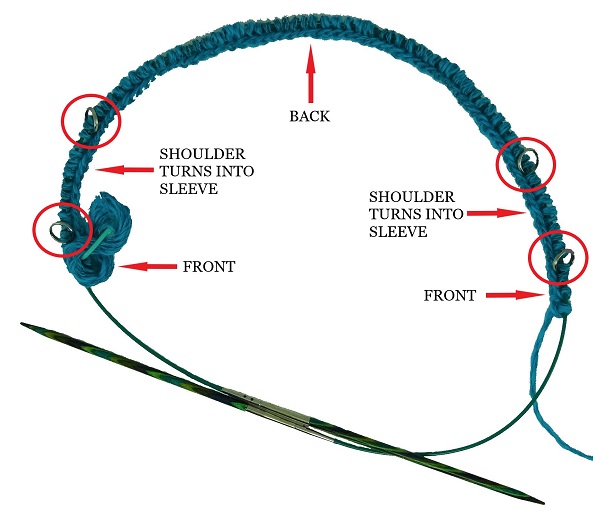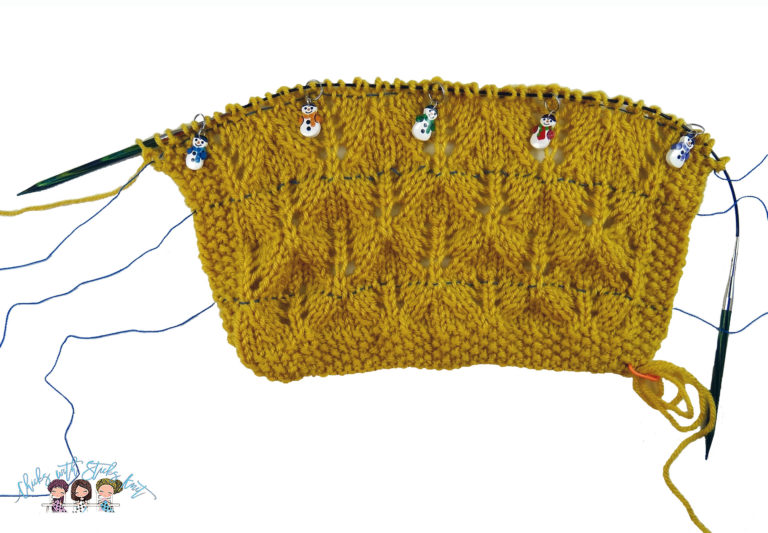How to Knit German Short Rows, or Double Stitch Short Rows
Short rows are used to shape or curve your knitting. The end result is that one side, or section, has more rows than another section. Short rows are often written in a pattern as “wrap and turn”. Wrap and turn means that you wrap the stitch with the working yarn, turn your work and knit in the opposite direction. This allows you to turn your knitting in the middle of a row. There is another way to perform a short row and that is a technique called a German Short Row, also called a Double Stitch Short Row. Short rows are most commonly used for:
- Sock heels
- Shoulder shaping
- Darts
- Backs of necks
- Circular yokes
- Scarves and shawls
- Set-in sleeves
- Collar shaping
I will demonstrate how to knit a German Short Row. The reason I prefer this method of short row is because, in my opinion, it leaves less of a gap in the knitting and it is easier to pick up at the end. Both methods accomplish the same results.
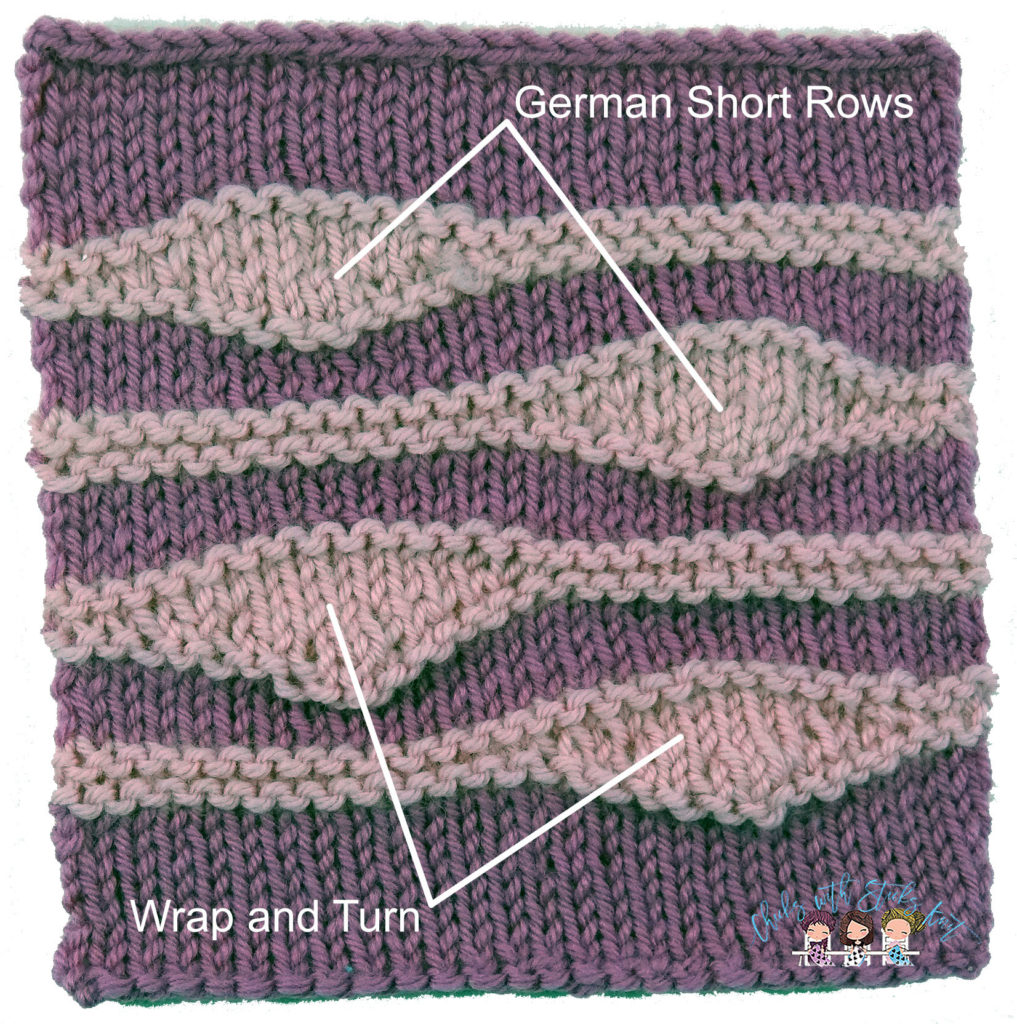
I will demonstrate the German short rows or “double stitches”
Step 1: To perform a German short row, or the “double stitch” method, the pattern may say something like “knit to 5 stitches before the end of the row and W&T”, you will knit that 5th stitch, so that there will be 4 stitches remaining on the left hand needle. Then think of it as “turn and work” instead of “wrap and turn”

Step 2: Turn your work
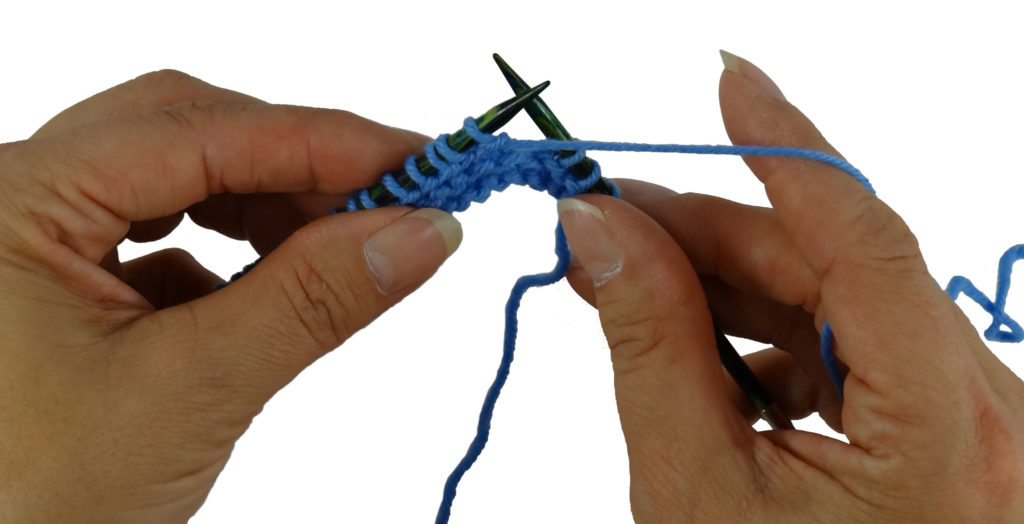
Step 3: Slip the first stitch purlwise to the right-hand needle with the yarn in the front of your work

Step 4: Pull the working yarn up and towards the back so that it pulls on the stitch creating the appearance that the stitch has “double legs”

Step 5: Move the yarn to the front of the work by bringing it between the needles, keeping it tight so that you don’t lose the “double legs”
Step 6: Purl to where your pattern tells you to wrap and turn, making sure you purl one extra stitch than the instructions indicate

Step 7: Turn your work

Step 8: Slip the first stitch on the left-hand needle purlwise to the right-hand needle with the yarn in the front of your work

Step 9: Pull the working yarn up and towards the back so that it pulls on the stitch creating the appearance that the stitch has “double legs”

Step 10: Keeping the yarn pulled tight and to the back, knit back along the row
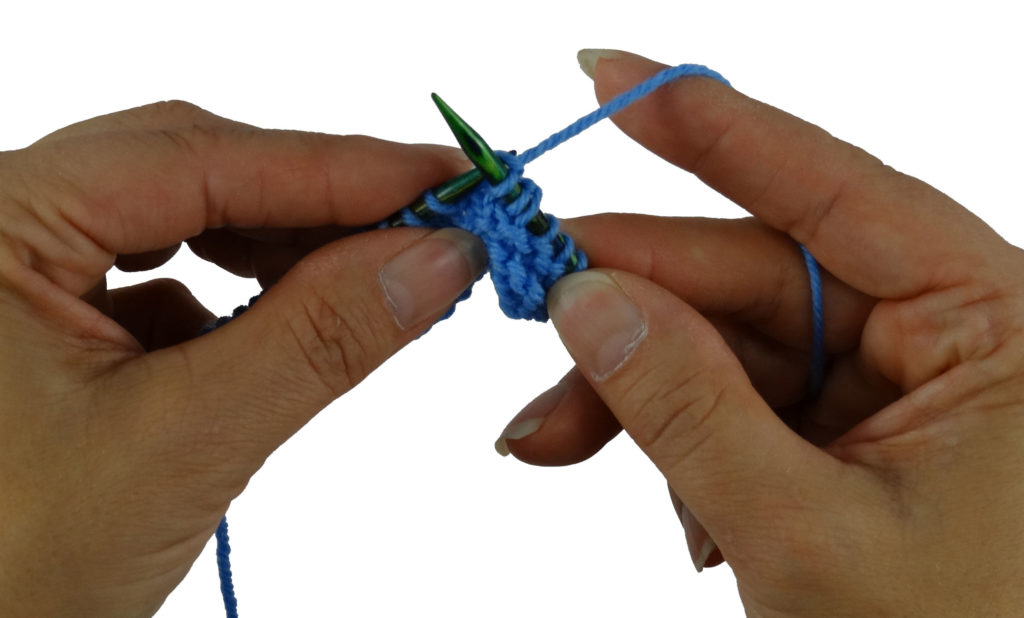
This demonstrates the German short row, or Double Stitch method.
I will demonstrate how to pick up the German short rows or “double stitches”
Step 1: Knit to the first double stitch.

Step 2: Knit the double stitch as if you were knitting two stitches together
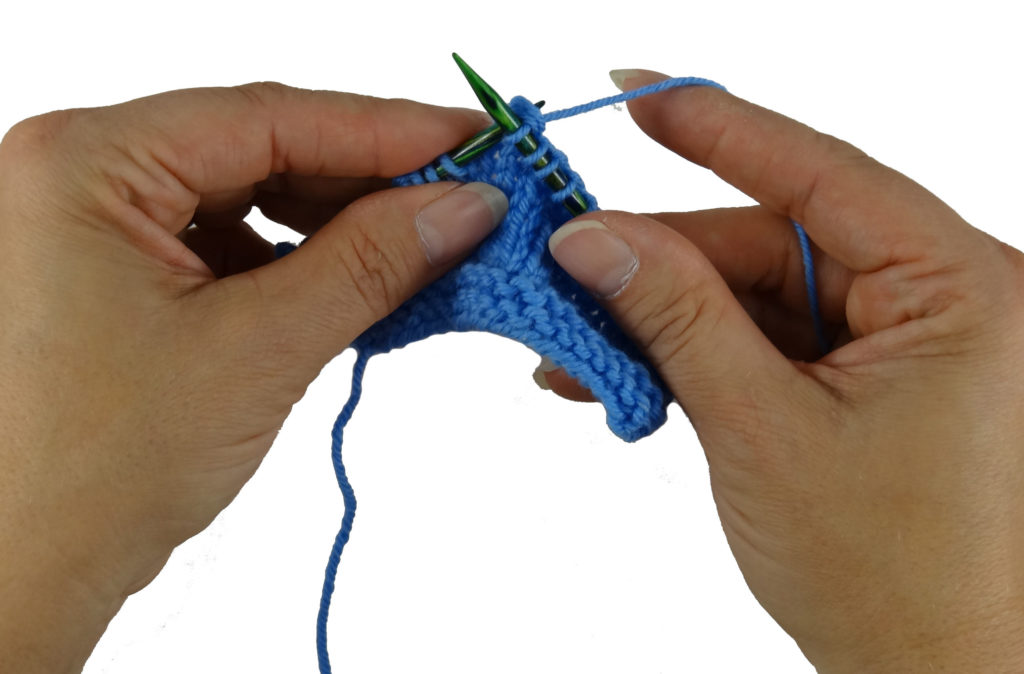
Step 3: Knit to the end of the row, or to the next double stitch (repeat if needed)

Step 4: Turn and purl to the first double stitch on the wrong side
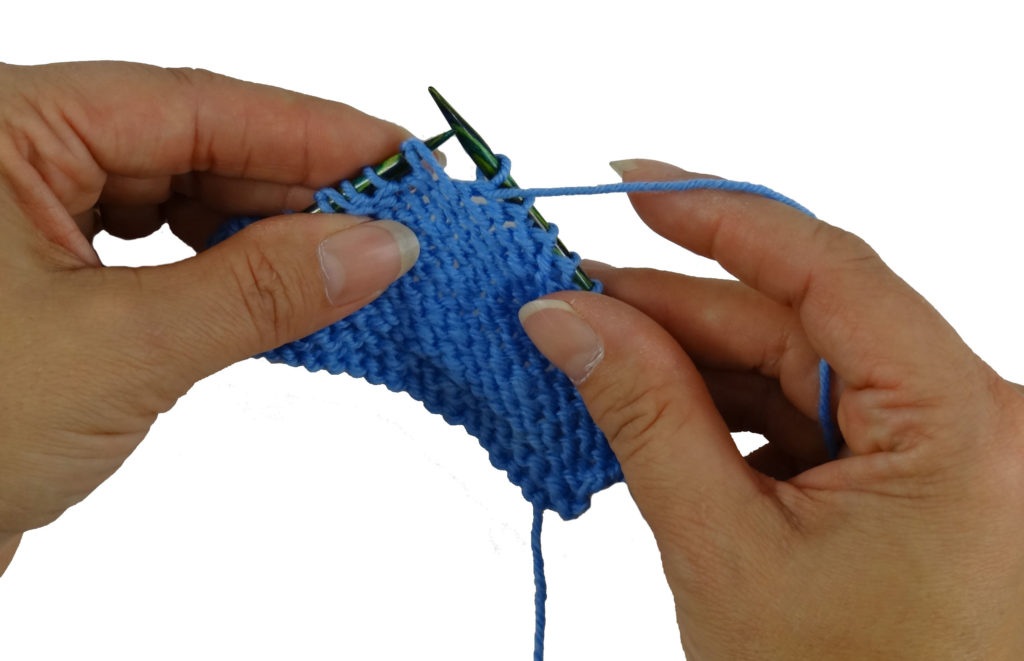
Step 5: Purl both stitches together as you would normally purl
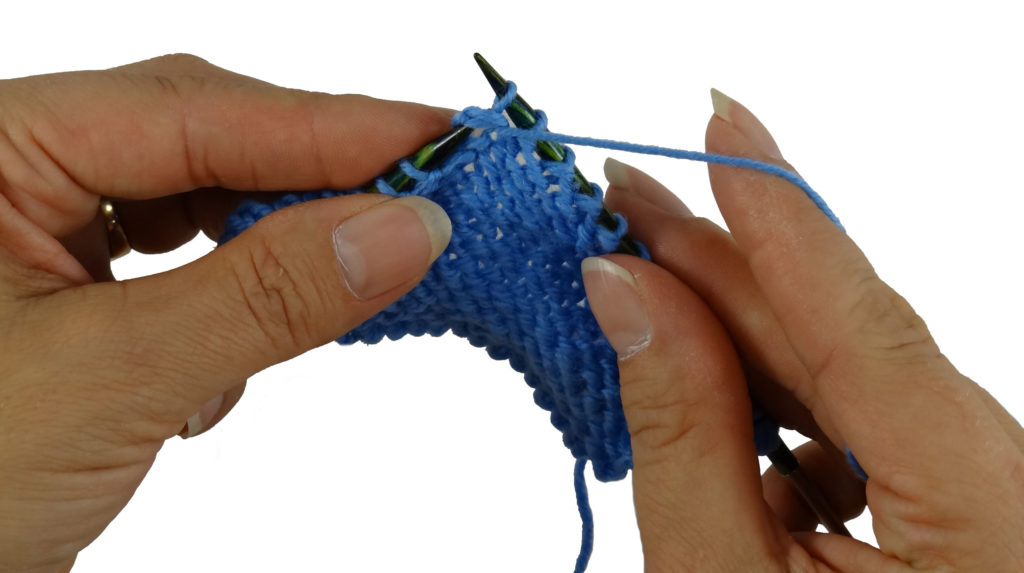
Step 6: Purl to the end of the row, or to the next double stitch (repeat if needed)

The biggest reason I like to do the German Short Row method is because I feel it is much easier to knit the double stitches together than it is to pick up the wrap and turn. Again, the end result is the same; it creates extra fabric between the short rows.
I use a trick of placing markers right before each double stitch so that I don’t get confused and treat them as a single stitch. This way when I knit or purl back, I don’t forget to knit or purl them together.

I encourage you to try both methods of short rows and decide which one you like best. Knowing these techniques will enable you to knit patterns that are more difficult. It feels like such a big accomplishment when you tackle, and finish, a project with a technique that you have never done before. Next time you see a pattern that has something in it that you don’t know how to do, try finding a tutorial that will help you. There are so many resources available, both written and in digital form. Be sure to tell me what new technique you want to learn below, and I will try to create a new blog post to help you.
Knit with Love my Friend,



